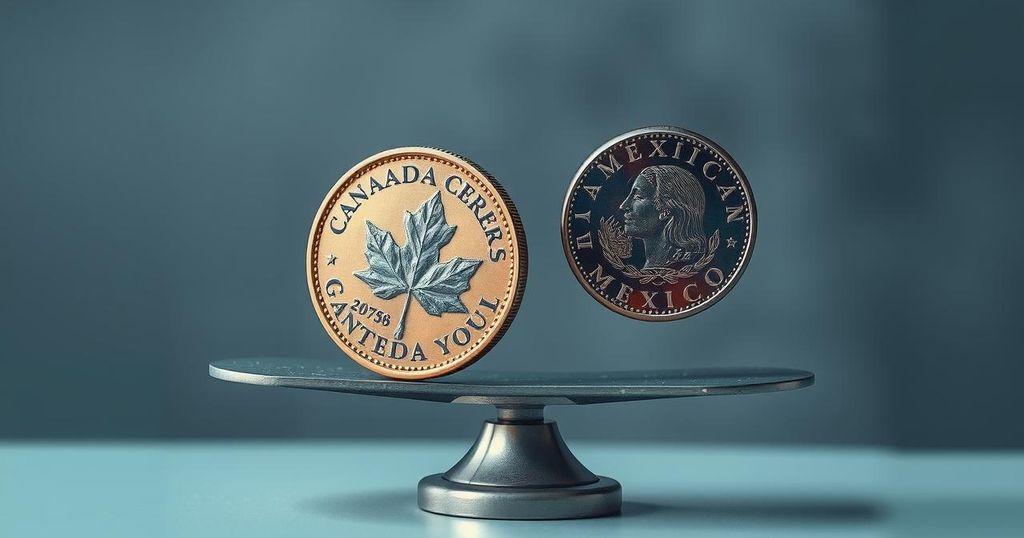The Canadian dollar has weakened by 0.5% since Trump’s inauguration, compared to a 3.5% increase in the Mexican peso. Analysts attribute the peso’s stability to Mexico’s negotiation capabilities and the new Canadian leadership’s hardline stance on tariffs. Effectively, Canada’s economic vulnerability may lead to further challenges as tariff discussions continue.
The Canadian dollar has faced a tougher situation than the Mexican peso amidst ongoing tariff tensions since Donald Trump’s election. Since January 20, when Trump took office, the loonie has depreciated by 0.5 percent against the U.S. dollar, while the Mexican peso has appreciated by 3.5 percent, ranking it eighth among 16 major currencies compared to Canada’s second-to-last position.
Currency analysts attribute the peso’s resilience to several factors, noting that Canada’s economy is more vulnerable to tariff-related pressures. Nick Rees from Monex Europe Ltd. highlighted that Mexico can negotiate better with the U.S., thereby reducing some market fears, while Canada faces more challenges in these negotiations, particularly given the recent election of Mark Carney, who has taken a hardline stance against tariffs.
Carney’s recent appointment as prime minister signals a continuation of Canada’s retaliatory tariff policies until respect is garnered from the U.S. Conversely, Mexican President Claudia Sheinbaum has opted for a calmer approach, aiming for favorable tariff negotiations. Recent statements from U.S. officials indicate a preference for Mexico’s response compared to Canada’s, which has led to more favorable treatment for Mexican exports.
Analysts from JPMorgan Chase suggest that Mexico is positioned to negotiate beneficial carve-outs in tariffs, particularly in auto imports, should it agree to limit goods from China. This potential flexibility enhances Mexico’s economic standing amidst ongoing tariff discussions. In contrast, Derek Holt from the Bank of Nova Scotia indicated that the Canadian dollar is at a disadvantage due to Trump’s punitive tariff actions.
Moreover, market predictions anticipate that the Bank of Canada may lower interest rates due to economic uncertainty related to tariffs, further weakening the Canadian dollar. In light of increasing household net worth as reported by Statistics Canada, economic resilience indicators may offer some hope for the Canadian economy.
As the economic landscape evolves, particularly concerning tariffs and currency valuations, both Canada and Mexico will face distinct challenges and opportunities. Continued analysis will be vital as developments unfold in trade negotiations and currency performance.
In summary, the Canadian dollar has been adversely affected by tariff threats more than the Mexican peso, which has benefited from a more favorable negotiation stance. With new political leadership in Canada advocating for strong retaliatory measures and Mexico navigating diplomatically, the landscape for both currencies remains dynamic. Market analysts predict ongoing adjustments as both nations respond to the shifting economic climate dictated by trade policies.
Original Source: financialpost.com






